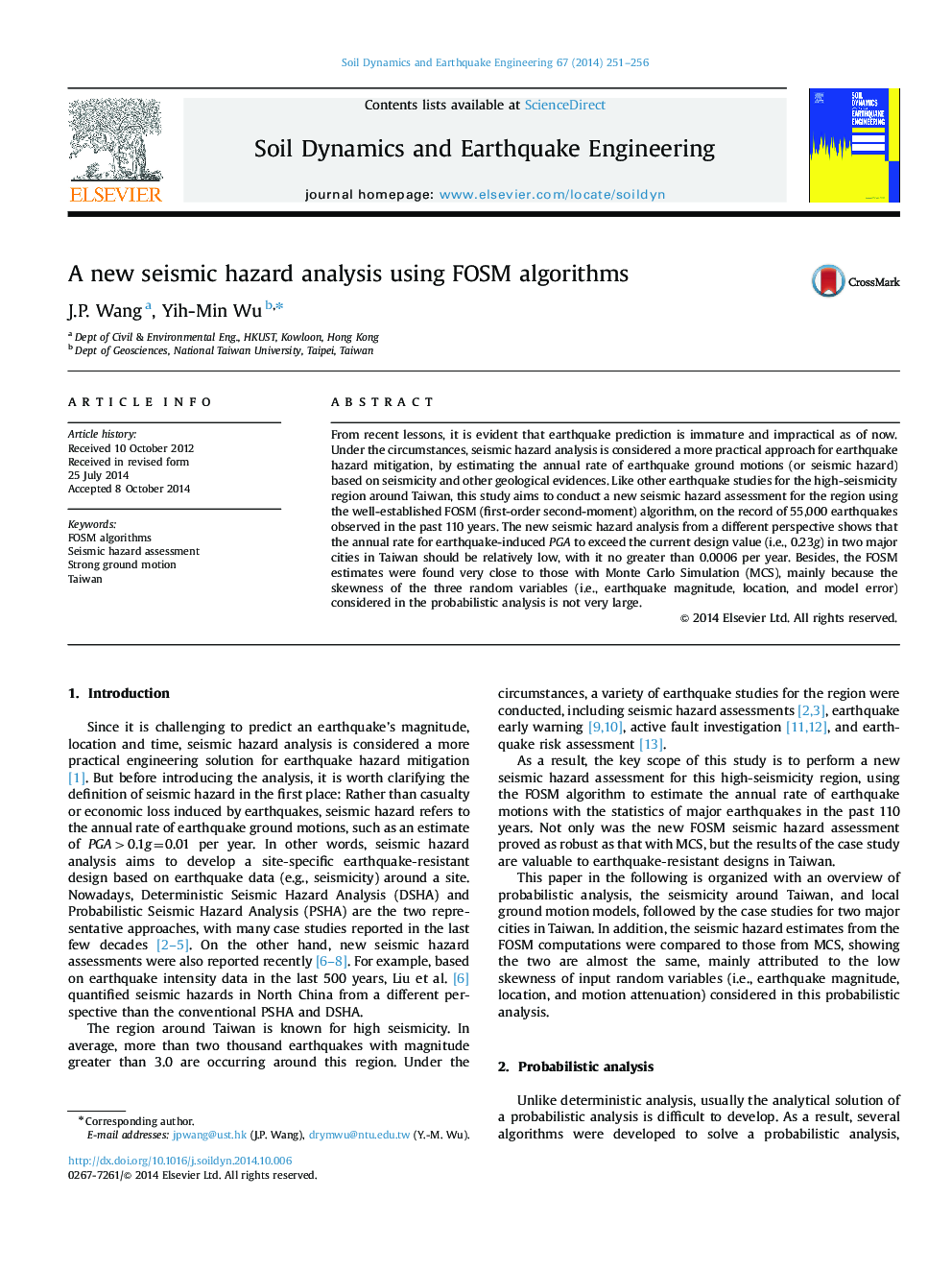| Article ID | Journal | Published Year | Pages | File Type |
|---|---|---|---|---|
| 6772382 | Soil Dynamics and Earthquake Engineering | 2014 | 6 Pages |
Abstract
From recent lessons, it is evident that earthquake prediction is immature and impractical as of now. Under the circumstances, seismic hazard analysis is considered a more practical approach for earthquake hazard mitigation, by estimating the annual rate of earthquake ground motions (or seismic hazard) based on seismicity and other geological evidences. Like other earthquake studies for the high-seismicity region around Taiwan, this study aims to conduct a new seismic hazard assessment for the region using the well-established FOSM (first-order second-moment) algorithm, on the record of 55,000 earthquakes observed in the past 110 years. The new seismic hazard analysis from a different perspective shows that the annual rate for earthquake-induced PGA to exceed the current design value (i.e., 0.23g) in two major cities in Taiwan should be relatively low, with it no greater than 0.0006 per year. Besides, the FOSM estimates were found very close to those with Monte Carlo Simulation (MCS), mainly because the skewness of the three random variables (i.e., earthquake magnitude, location, and model error) considered in the probabilistic analysis is not very large.
Related Topics
Physical Sciences and Engineering
Earth and Planetary Sciences
Geotechnical Engineering and Engineering Geology
Authors
J.P. Wang, Yih-Min Wu,
